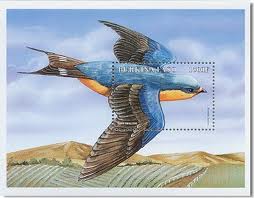Some of Britain's most familiar countryside birds have plummeted in numbers since the 1990s, and some species have disappeared from parts of the UK, according to an authoritative annual report. Numbers of the farmland-dwelling grey partridge have halved since 1995, while the turtle dove has declined by 95%. The yellow wagtail, which inhabits farm and wetland, has declined by 45% over the same period. The State of the UK's Birds report, from the RSPB, the British Trust for Ornithology (BTO), the Wildfowl & Wetlands Trust and several UK government nature bodies, shows that of the UK's 107 most widespread and common breeding birds, 16 species have declined by more than a third since 1995, including the willow tit, starling, cuckoo, lapwing and wood warbler.
Many of these species do not require highly managed landscapes such as nature reserves or protected areas, but are once common birds that live in the "wider countryside", in farmland, open country, commons, woodlands or local country parks. Dr Mark Eaton, RSPB conservation scientist, said many contributors to the report were shocked at how poorly familiar species were faring. "Many of the birds we're referring to aren't rare and don't occur in remote locations. To the contrary, they are ones you used to see while walking the dog or enjoying a family picnic. But over two decades many of these species have ebbed away from huge swaths of our countryside."
The report has been running since 1999 and brings together the most recently published research, which is used to update population trends. This year's report draws heavily on the findings of the BTO's Bird Atlas 2007-11, which was published last month, a massive volunteer-led project that mapped changes in the patterns of distribution and abundance of 296 breeding and wintering bird species in Britain and Ireland. By including the BTO findings, the report has for the first time in 20 years enabled conservationists to look at bird populations in terms of population trends and range. "The shocking thing when you put both sets of figures together is the decline in number and range," said an RSPB spokesman.The list of familiar countryside birds that are declining includes:
• The willow tit, a woodland bird whose numbers have plummeted by 82% since 1995 and whose range has halved over the past two decades
• The turtle dove, a farmland bird with a 95% decline in numbers since 1995 and a 51% decline in range over the past 40 years
• The cuckoo, whose numbers have halved since 1995. The latest bird atlas reveals that although its range has contracted by just 8% over the past 40 years, there are marked declines in abundance in the south and east of Britain
• The whinchat, a bird of open countryside whose numbers have fallen by 60% since 1995, and in range by 48% over the past 40 years
• The starling, which lives in urban areas and farmland and whose population has decreased by 53% since 1995. The atlas reveals that its range has contracted by 5% over the past 40 years with a steep decline in abundance in Britain, and an increase in Northern Ireland
• The wood warbler, a summer-visiting woodland bird, which has dropped in number by 69% since 1995, and a range contraction of 34% since the 1970s
• The yellow wagtail, a bird of farmland and wetland that has experienced a 45% decline in numbers since 1995 and a 32% contraction in range
• The lapwing, a farm and wetland inhabitant whose numbers have dropped by 41% since 1995. The atlas reveals that the lapwing's range has contracted by 18% over the past 40 years, with the greatest losses in western Britain and Northern Ireland
• The snipe, a wetland bird whose breeding range has shrunk by 31% over the past 40 years
• The grey partridge, a farmland bird whose population has declined by 53% since 1995 and whose range has contracted by 40% over the past 40 years
• The corn bunting, a farmland bird whose population has declined by 34% since 1995. The atlas shows that its distribution has contracted by 56% over the past 40 years; and the species is now extinct in Ireland.
Colette Hall, species monitoring officer with the Wildfowl & Wetlands Trust, said: "There's worrying evidence here that the breeding ranges of many of our waders are drastically shrinking. We're losing much-loved species like snipe or lapwing completely from southern parts of England now."
Among other declines, the wood warbler, a summer-visiting woodland bird, has dropped in number by 69% and the starling, which lives in urban areas and farmland, has suffered a 53% drop since 1995. Cuckoo numbers have halved.
Source: The Guardian, 9 December 2013
http://www.theguardian.com/environment/2013/dec/09/decline-uk-countrysi…

- Log in to post comments
